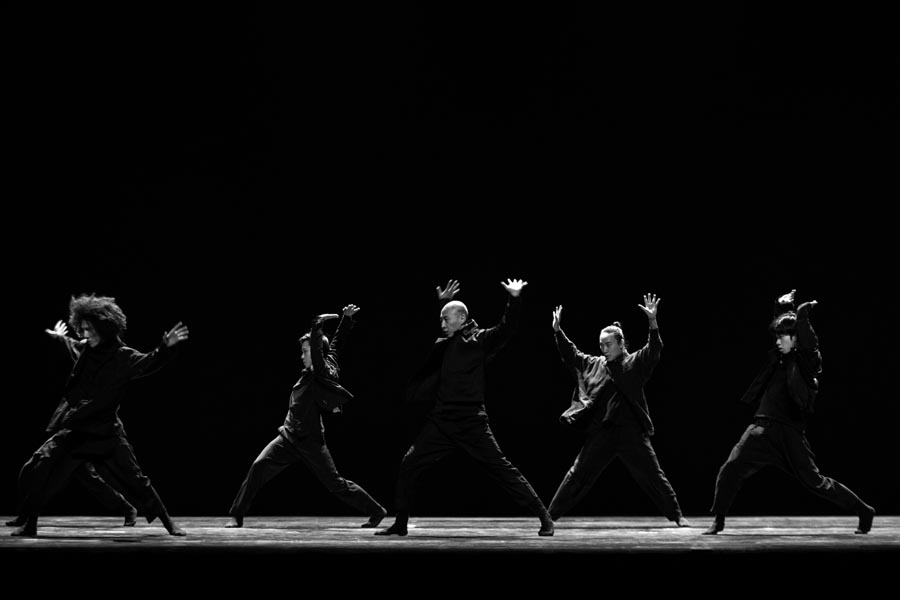 |
|
A stage photo of 32 Chapters. [Photo provided to chinadaily.com.cn] |
Turning a new chapter on life
Indie choreographer and dancer Wen Xiaochao turned 32 in 2018, which motivated him to create the work 32 Chapters, named after his age at the time.
"It's about faith, about dreams. There is beauty in this dream. There are heartbroken moments. There is loneliness that you have to bear, but still, it's very positive," he said. "As long as you stick to this dream, you can see the silver linings behind the clouds."
The 20-odd-minute performance clip on Nov 25 started in the dynamic rhythm of Come As You Are, a song written by the American band Nirvana's frontman Kurt Cobain, with six dancers dressed in loose black clothing swinging freely to the infectious beat of the music.
They soon shifted to six sentimental solos, portraying different kinds of solitude and ways to ward it off. Fragile or powerful, they were spectacular displays of techniques and hearts, sharing with the audience their deepest fears and passions.
Wen says these solos are his favorite part. "Each of us demonstrates loneliness in our own ways. I hope to dig out their different personalities through these solos," Wen says.
Standing at a crossroads in his dance career, he said, "I used to pay a lot of attention to the dance techniques - my priority was often on how to fully present the physical beauty. But as I grow older, now I value more the meaning behind these dance moves."
Wen's dance career started with ballet and folk dance at the age of 13. He switched to contemporary dance at 18. He graduated from the Beijing Dance Academy, where he got the opportunity to study contemporary dance choreography in New Zealand for a year as an exchange student. That year had helped nurture the openness and more creative, bold thinking in his later works.
"I think the choreography of dancers in my generation has become very diversified in recent years. Everyone touches on different topics, exploring different possibilities of human bodies. They fully express themselves, which is very different from previous years when dancers, more often than not, imitated each other," he said.
"Now their works embody more personal thinking. They've formed their own vocabulary. This vocabulary means their own styles and ways of expression."